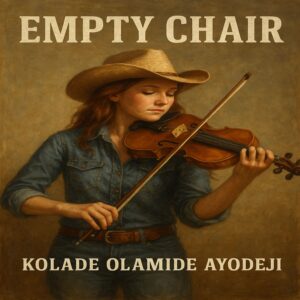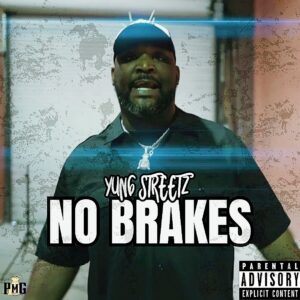

This is the 100th andsurprise!final edition of Music in the Round. MitR began in mid-2003, shortly after SACD and DVD-A discs made high-quality multichannel music convenient and widely available. At the time, I was convinced that multichannel reproduction was superior to stereo because it was able to reproduce the full sound of the performancenot just the performers. Stereophile’s founder, J. Gordon Holt, had promoted this idea many times, but the appearance of the new media finally brought it to a wider audience. I recall that, when then-Editor John Atkinson and I floated the idea of a column on multichannel audio, we had to promise our publisher that it would not deal with anything having to do with video or home theater, lest it impinge on the territory of sister publications. We readily agreed: In keeping with Stereophile’s mission, the column has always been about optimizing the music-listening experience.
Back then, we were so grateful for every new music release that we gobbled them up, sometimes regardless of whether the content exactly suited our taste. We sought hardware to play the discs, even if integration with the rest of our components was clumsy. We foresaw a future in which multichannel would supplant stereo, just as stereo succeeded mono, simply because it was technically and aesthetically superior. Multichannel recordings would become the “lingua franca” of the music industry and hardware to play it would be the default, especially for the serious audiophile.
Despite all that, even today, nothing more than casual references to multichannel music playback appear in the pages of audio magazines. Even in Stereophile, Music in the Round is a niche: too easily passed over and possibly beyond the notice of many readers. This contrasts with the interest and attention paid to it all over the Internet and in my email inbox. General awareness requires general exposure.
To this end, Stereophile will now integrate multichannel products and recordings into the main editorial content of Stereophile. Jim Austin decided to make this change during a long discussion on the eve of his elevation to the position of Editor. Our conversation acknowledges multichannel as a valid and important facet of high-quality music reproduction, both scientifically and aesthetically, even as it remains a small niche.
Intrinsic to this change is the idea that multichannel product coverage will now be offered in full equipment reports and will be subject to measurements and analyses by Technical Editor John Atkinson, something for which I and many readers have long wished. It may even result in other reviewers venturing into multichannelwho knows?
I know many may miss this platform for advancing multichannel audio, but I’m glad to be free from the yoke of the bimonthly cycle. With the editor’s encouragement, I will now investigate and report on new technology as it applies to all aspects of audio. I have new equipment reviews loaded into the pipeline, including stereo and multichannel products. Equally important to me is the time flexibility to explore and listen to music. At this moment, my music collection consists of about 40,000 multichannel files/tracks, plus another 30,000 stereo tracks. I’m adding new releases all the time.
“Best sound of my life” is what a good friend of mine recently posted about his own multichannel experience. I second that. I hope that many more of you will feel the same way as Stereophile moves multichannel into the mainstream.
Looking back and looking forward
During the 16 years my column has been published, Apple’s iTunes and the rising popularity of portable personal players fostered the mass market’s drive toward the cheap and the convenient. This may have been good for most of the world, but it diverted aspirational interest away from high-quality audio and resulted in the commercial failure of such physical media as DVD-A, SACD, and ultimately CD. On the other hand, it planted the seeds for the explosion of interest in quality headphones, music streaming, and downloading.
With the near-extinction of physical discs, the shrinkage in the market for disc players is no surprise. High-end two-channel players survive, for the time being, but analog outputs are disappearing from “universal” players, leaving HDMI as the only multichannel output option. The gravestone of multichannel analog player outputs is marked with Oppo’s withdrawal from the market. In a world without physical media, this was inevitable.
Streaming and downloading, along with file playback, represent the future of the music business and of multichannel. You can still buy and play SACDs and Blu-ray discs, but fans of all types of music are now ripping these and storing the files in collections from which they have near-instant access to everything. I note with pleasure that streaming site Qobuz now has a few dozen high-resolution multichannel albums: You can stream them in 5.1 channels at 24/96 via Roon! It isn’t a wide range of repertoire, but just the idea that it’s on a streaming service thrills me as much as my first file playback (or my first LP).
For a short while during the first decade of this century, the prospect of multichannel music as a new product category encouraged the audio industry to offer up a wave of suitable analog preamps and power amps, but the rising tide of home theater swept that away. We had hoped that the popularity of surround systems for home theater would encourage interest in multichannel music, but the general public never appreciated that music playback could go beyond stereo, even when they already had the ability to play “surround sound” recordings in their homes. Still, many avid HT enthusiasts ask how to play multichannel files through their theater equipment, via connections other than the obvious and somewhat compromised HDMI.
The answer is that AVRs and preamp-processors have become network appliances, and nothing is needed, save a little firmware, to enable them as multichannel renderers on a home network. These are inherently multichannel audio devices armed with networking hardware, yet they’re not set up to accept multichannel audio via their Ethernet inputs. It’s disturbing that most manufacturers don’t seem to recognize how illogical this is. Consider the Trinnov Altitude preamp-processors, which can stream multichannel from my server without complications: We should demand similar capabilities from all such products.
How to do multichannel today
Here’s a quick parting shot on how to get into multichannel music playback.
FILE STORAGE: A high-resolution multichannel track, even compressed, can take up more than a gigabyte, so storage capacity is important. Think in terms of terabytes (TB). Hard drives are essential, and an NAS (network-attached storage) device, which combines and organizes an array of drives, quickly becomes inevitable. Using a NAS also allows you to relocate the relatively noisy storage device to a place outside the listening room where it’s still accessible via Ethernet or Wi-Fi. A remotely located backup copy or two of everything is essential! Eventually, every drive will fail, and without backup you face the horror of losing some or all of your music collection.
MUSIC PLAYER HARDWARE: In choosing storage media, the only distinction between the requirements for multichannel and stereo is capacity. For the player hardware, the big issues are noise and processing power. If you are content to play the music as it is, without any processing, Roon’s compact and fanless Nucleus or Nucleus+ will do the job without fuss, although they are restricted to using Roon software. You can save money and gain flexibility by buying an i5 or i7 NUC computer, or by using almost any quiet but capable processorincluding the one built into your NASas long sufficient muscle. MacOS, Windows, Linux . . . there is software for all, so you can choose whichever OS suits. In fact, you can start the process rolling with whatever computer you already have around (footnote 1).
Footnote 1: There are a few proprietary packaged servers from vendors like SOtM, Nimitra, and DigiBitwork that will do high-resolution multichannel but, unfortunately, the majority of the excellent music servers reviewed in Stereophile will notor at least do not support it officially.





